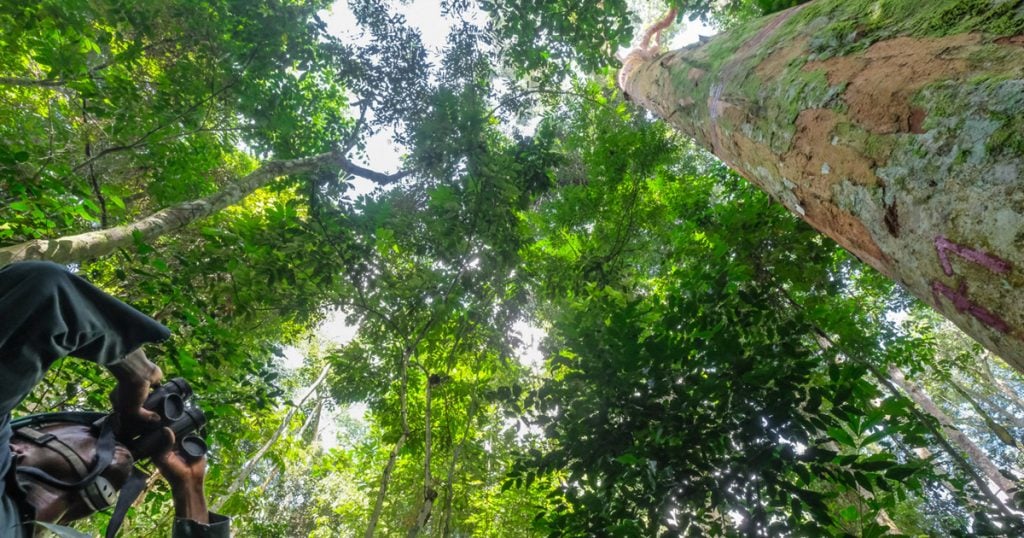{"Location":{"Latitude":"0.1498584","Longitude":"102.8197858"},"Category":"Partners","Type":"Counter Poaching","projectStatus":"Ongoing","lookingForFunds":"Yes","lookingForEmployees":"No","BasicData":{"Name_Of_Org":"Sumatran Tiger Project","Country":"Indonesia","Region":"Sumatra, Indonesia","Primary_Test":"PROTECT Nature & Wild Habitat ","Secondary_Conservation_Action":"PROTECT Nature & Wild Habitat, SECURE Livlihoods","Solution_Website":"","Organization_Website":"https://sumatrantiger.id/","Support_Link":""},"AdditionalInfo":{"Species_Focus":"","Lessons_Learned":"At the heart of this project’s HWC solutions is the development and capacity building of HWC management teams at the village level to empower communities to independently handle tiger encounters. Legal frameworks support the trained teams of volunteers, who are empowered by a governor’s decree to monitor and manage encounters with tigers by following an evidence-based protocol. Once the presence of a tiger close to a village is confirmed by the village HWC team, a specialized task force will be called to either install camera traps, closely monitor the tiger’s movement or ensure measures to scare tigers away from villages are taken. Close, coordinated communication is critical for ensuring responses are timely and adequate when addressing community concerns. In addition to these HWC teams, installing tiger proof livestock enclosures have provided increased security for communities and their livestock, as tigers tend not to return if they have not been able to penetrate the enclosures. The integration of community-based prevention and response interventions, informed by research and monitoring and backed by local policies has reduced livestock predation and attacks on people to zero since the start of the programme and provided security for the communities and their livelihoods.","Impact_Numbers":"","Impact_Tracks":"Frontline Communities, Public Policies","Project_Start_Date":"","Project_End_Date":"","Project_Value":"rolling"},"ContactInfo":{"Contact_Person":"Rudijanta Tjahja Nugraha","Email":"[email protected]"},"Description":{"Organization_Mission_Statement":"Transforming Effectiveness of Biodiversity Conservation in Priority Sumatran Landscapes","Problem_Statement":"In Sumatra, approximately 650 tigers (Goodrich et al. 2015) are found in highly fragmented and declining rainforest habitat and often disperse into village and farmland areas in search of territory and prey. Annually, on average, 15 people were injured or killed in interactions with tigers and 83 families lost their livestock to tiger predation between the years 2001 to 2016 (UNDP 2020). Such conflicts have historically seen the Balinese and Javan tigers being hunted to extinction. The extirpation of apex predators such as tigers from a wildlife community can lead to population explosions of reservoir species more likely to come in contact with humans and livestock. \nRecognising that the safety of communities and their assets is critical for saving the tiger, the Sumatran Tiger Project partners with local communities to prevent and manage Human-Wildlife Conflict (HWC). \nProject analyzed spatiotemporal patterns of human tiger conflict to identify the most conflict prone districts within five tiger landscapes. In this project area, around 80 tiger encounters were documented on an annual basis. To address these conflicts, HWC coordination teams prepared training plans and Standard Operating Procedures to ensure safe human tiger conflict management for both people and wildlife and created communication networks and tiger proof enclosures to increase responses and effectiveness in HWC handling. \nThe initiatives will prevent future human and wildlife conflicts that could trigger future zoonotic outbreaks. The transmission of pathogens from animals to humans has brought into sharp focus zoonotic diseases that are spread by animals forced to move out of their natural habitats that are increasingly being destroyed.","Support_Needed":"This campaign can support project's mission by increasing awareness on five specific solutions developed by the project that have becoming the best practices in reducing human and wildlife conflicts in project's landscapes. These solutions could also serve as lessons learned for other projects, communities or organizations dealing with human and wildlife conflicts to reduce zoonotic outbreaks.","Activities_To_Solve_The_Problem":"Sumatran Tiger Project provides five solutions to reduce human and wildlife conflicts that could contribute in reducing future zoonotic outbreaks.","Description_Of_Solution":"The UNDP Sumatran Tiger Project has introduced five systematic and integrated interventions dealing with human and tiger conflicts working with project partners, national parks and local governments: \n1. Forming village, district, and provincial human and wildlife conflict mitigation teams in all landscapes: Gunung Leuser National Park, Kerinci Seblat National Park, Berbak Sembilang National Park and Bukit Barisan Selatan National Park. The initiative has been completed with budgets coming from the project and partners. \n2. Conducting advocacy training for relevant stakeholders on increasing communications and reporting skills when responding to human and wildlife conflicts. The initiative has been conducted in all landscapes. Communication networks (in forms of WA Groups) were formed in all landscapes. Members of these networks consist of national parks staff, BKSDA, journalists, and wildlife experts who actively coordinated and discussed solutions to human and wildlife conflicts at fields. \n3. Developing curriculum on HWC mitigation and hosting a series of human tiger conflict mitigation training - using the syllabus - for different targeted groups, e.g., national park/local government staff, veterinarians, and the local community. \n4. Building tiger-proof enclosures in targeted landscapes. The Sumatran tiger project built 11 tiger proof enclosures between 2017-2019 - three in Gunung Leuser National Park and eight in Bukit Barisan Selatan National Park. The initiative is ongoing based on the needs at project sites. The initiative was also adopted by members of communities with their own budget or co-funding budget with partners.\n5. Strengthening village capacity to handle conflict. From 2016 to June 2019, the project developed two independent village communities (Masyarakat Desa Mandiri) in North Sumatra Province and five independent village communities in Bukit Barisan Selatan Province. The two villages have become part of larger independent village community networks handling human and wildlife conflicts in Sumatra.","Result_And_Outcome":"1. Teams that are responsible for the monitoring and management of human and tiger conflict, as well as other wildlife conflicts in their respective landscapes, have increased capacity to resolve the problems.\n2. The outcome of this training has resulted in positive local media coverage and articles that support tiger conservation and project activities. Project has also successfully formed four communication networks in the project's landscapes (in forms of WA groups) that increase communication and coordination between relevant stakeholders in handling human and wildlife conflicts at fields. \n3. The curriculum is used as guidelines to systematically prevent human and wildlife conflicts. \n4. A recent analysis showed members of communities are still actively using these tiger proof enclosures to protect their livestock. These enclosures have effectively reduced risks of HWCs and increased people’s quality of life in targeted landscapes.\n5. These interventions empower communities to independently handle HWCs based on evidence-based mitigation protocols developed by the project.\nSpecific to livestock predations, the project has managed to reduce livestock predation cases to zero in the villages where tiger proof enclosures have been developed. And based on project partners' reports for PIR (project implementation report) there are no human casualties in the project's landscapes as human and wildlife conflicts in the area have been handled using standardized conflict mitigation protocols. "}}


[test] Excellent solution